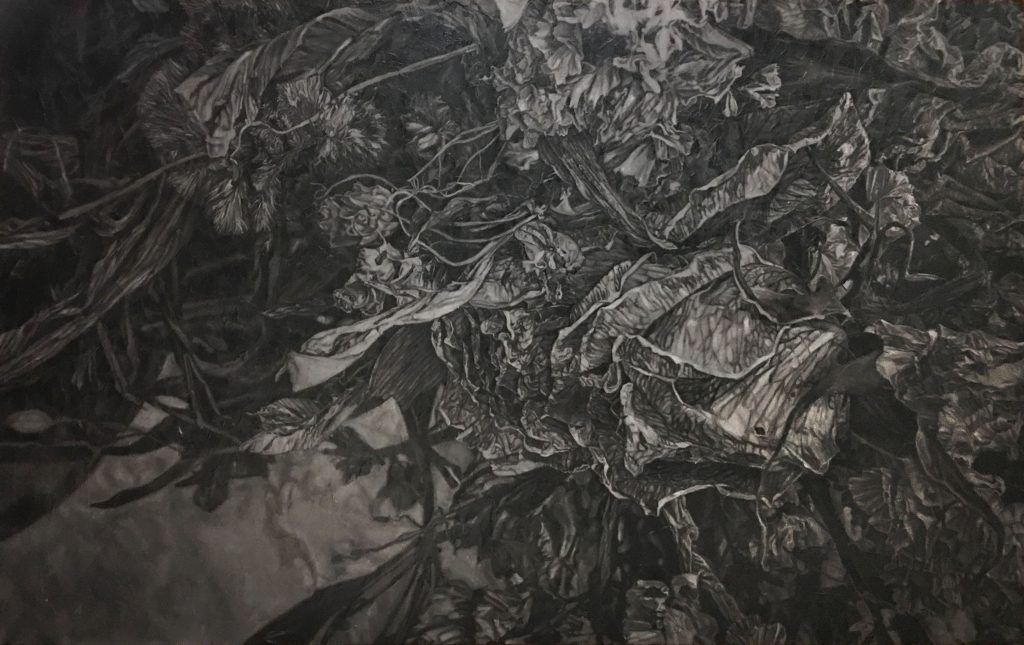VASE LIFE
Shannah Orencio
October 7 - October 18, 2018

The Language of Flowers:
Shannah Orencio’s Vase Life
No important human celebration goes without flowers—those intense, fragrant creations. Their colors mark the event, committing them to memory, lending them an indelible meaning. Imagine a wedding without them, or a funeral. What better way would a suffering heart be assuaged by if not with a bouquet of blossoms? Through flowers, we can communicate our love, ask for forgiveness. They lend a voice to what we, for one reason or another, cannot say.
But no sooner than we admire their pure, velveteen beauty that they die. They crumple in a heap together with other discarded objects, their use having been long spent. We attempt to mitigate their premature loss by pressing their petals between pages of a well-loved book. We put them in a vase filled with water.
Vase Life, Shannah Orencio’s third solo exhibition, is the artist’s symbolic attempt to extend the vitality of flowers through the more permanent evidence of art. The flowers in question were those that were part of the installation of her previous show, Soul Companions. She kept them for months on end enamored by how “beautiful flowers wilt and how it is incredibly rare to have dried flowers in a common Filipino household.”
So instead of throwing them away, Orencio turns them into the subject matter of her work, chronicling not their prodigious blossoming but their certain deterioration. In her stark monochromatic works, particularly in her tondo (circular canvas) series, they are shriveled, leaves and petals curling onto themselves, their initial blush long gone. But in this state, Orencio reveals how the flowers could still have a particular resonance, a particular beauty. Their symbolic value remains.
As still lifes, they fall as vanitas—reminders of mortality. But their centrality in the composition allows the viewer to encounter these flowers as a physical presence. In fact, actual petals from the installation are now part of the functional sculpture, titled “Centerpiece,” adorning the circular surfaces of the table and the chairs. Rather than fixing them all in one go, Orencio has arranged the petals in layers because, as how the artist puts it, “not everything falls off at the same moment.” These petals mark different periods in the continuum of time.
“Centerpiece,” of course, repeats the discs of the round canvases, which gesture at “the basic shape of the majority of flowers (which) is a circle.” The concept of time as eternally recurring is foregrounded. Even the female figures of her works swaddled in generous blossoms appear to signify prior incarnations. Nothing truly dies, the artist seems to be saying. They are just transformed into something else.
That remarkable transformation is what we see extolled in Vase Life. Yes, the works are in keeping with the mode of elegy, but they are also examples of a remarkable kind of resurrection. Through the artist’s touch, she makes those flowers come to life again not as their previous virginal selves but as instances through which time has been allowed to work deep into their fibers. Loss is not denied, but rather affirmed, celebrated. The flowers that these works venerate are still here or, in the language of Orencio herself, “everpresent.”
—Carlomar Arcangel Daoana